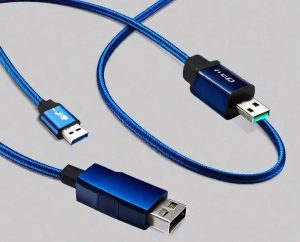
Continue reading The evolution of USB
USB technology continues to evolve. Today, many flash drives work on them, so let’s talk about them in more detail.
- USB 3.0
In November 2008, the working group working on the modernization of USB technology announced the completion of the USB 3.0 interface specification, which was characterized by high speed, which increased by 10 times compared to the previous version.
Other important properties:
- energy efficiency indicators were improved;
- The developers also increased the maximum power supply current of the peripheral to 900 mA.
- increased bandwidth – that is, instead of one, it uses two unidirectional paths to transmit information data;
- support for rotary media has been added – the batch protocol has been supplemented with the Stream Protocol function;
- With another new feature, USB 3.0 allows the device to asynchronously notify the host when it is ready;
- The power control states of channels U0-U-3 were also determined.
In addition, the working group made USB 3.0 compatible with USB 2.0. The connectors of the new standard are often highlighted in blue, sometimes they are red, and made of plastic.
- USB 3.1
On September 9, 2013, the USB 3.0 Promoter Group announced certain changes to the USB 3.0 technology and the release of an updated version of USB 3.1.
Here, the data transfer rate was already up to 10 Gbps.
After the updated standard was released, USB-IF informed developers and users that the USB 3.0 connector will now be called USB 3.1 Gen 1, and its newer versions will be called USB 3.1 Gen 2.
If we are talking about USB 3.1 Gen 2, it should be noted that experts have increased the speed to 10 Gbps and reduced the encoding latency to 3% and switched to the 128b/132b encoding scheme.
- USB 4.0
In 2019, the updated USB 4.0 technology was released. This version of the product is equipped with the best set of conductors and connectors, which ensures faster data transfer.
Other important features of the device:
- universal compatibility;
- robust design;
- is one of the fastest information data transfers;
- The device works perfectly when connected to older port designs;
- it is suitable for tunneling and can support data transmission speeds of up to 40 Gbps, so there are minimal disruptions during this process
- USB-C
This type of product connects as a host and a device.
The 24-pin connector is characterized by almost the same size as Micro-B USB and is an example of a two-sided type C. This indicates that it is very small.
A USB cable that is equipped with a type C connector is identical and symmetrical at both ends, in other words, it can be connected in both directions.
USB Type-C cables contain an ID chip and can optionally support 1.5A and 3.0A bus power currents over the bus.
Other important characteristics:
- fast transfer of information data;
- high power;
- unique male, symmetrical connector;
- the ability to support 1.5 or 2 A, this type of cable can support power up to 3 A.
Thus, the process of improving USB technology continues to ensure user comfort.

